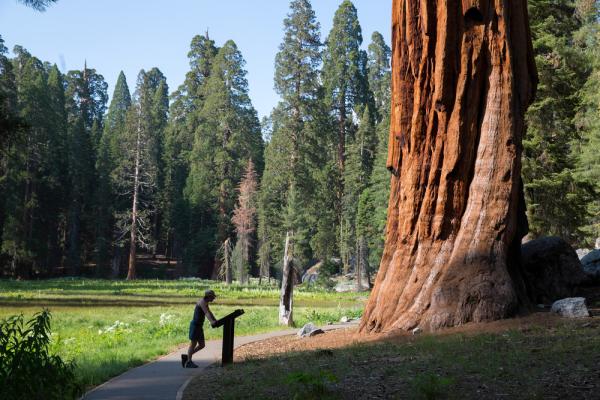The sequoia, the tallest and longest-living tree on Earth, is a wonder of creation. With its massive trunk and staggering verticality, it's difficult not to be awed while in its presence. Adding to that, it is wrapped in fire-resistant bark and it repels damaging insects, making the sequoia virtually indestructible.
However, it needs water. A lot of it. So in the wake of the multi-year drought in the west and northwest, the question being raised is whether these forestal skyscrapers have been weakened or otherwise compromised. While there's no precise answer to that at this time, arborists are seeing signs that water depletion has had some effects.
Thayer Walker, a well-regarded journalist who wrote an extensive account on the Giant Forest at the Sequoia National Park in California, has identified instances of decline that are worthy of note. In his article, "Giants in the Face of Drought," published in The Atlantic, he relayed this observation, stemming from a conversation with Nate Stephenson, a forest ecologist for the U.S. Geological Survey.
"In more than 30 years of studying these trees," Walker wrote about the sequoias, which can live 3,000 years or longer, "Stephenson had only seen two die on their feet. Five years into the current drought, he’s now seen dozens of standing dead."
Yes, this is an anecdote and at this early stage it's not the final determination of what's happening across the region. But it certainly is noteworthy as ecologists continue to asses the aftermath of the long California drought.
Meanwhile, other reports echo what Walker has learned. "The drought of the 2010s left many sequoias stressed from lack of water, according to Scientific American," writes LiveScience in a recent report. "Though sequoias usually die under their own weight, recently scientists have seen some die still standing, and others exhibiting symptoms of dehydration, including brown foliage at the top of the tree. One scientist told PBS in 2015, 'The trees are definitely as stressed as we've ever seen giant sequoia.' "
Yes, these trees are so huge and sturdy, it's almost always gravity – the inability for the sequoia to keep itself upright – that kills the mighty sequoia, which can grow up to 300 feet, the height of a 30-story building.
To give you an idea of how these mammoths trees nourishes themselves, and what takes place when not enough water is available, here's an descriptive excerpt from Walker's work:
 "Giant sequoias, like all trees, play a central role in the hydrologic cycle. Storms drop rain and snow, which giant sequoias can chug to the tune of 800 gallons per day — more than any other tree.
"Giant sequoias, like all trees, play a central role in the hydrologic cycle. Storms drop rain and snow, which giant sequoias can chug to the tune of 800 gallons per day — more than any other tree.
"As the trees draw water out of the ground, the air surrounding the leaves draws water through the trees and, eventually, back into the atmosphere. That process, called transpiration, creates tension within the tree’s water columns. The drier the atmosphere and the less groundwater available, the higher the tension.
"Under extreme drought conditions, when that tension grows too high, those columns of water can snap like a rubber band. Gas bubbles form, creating an embolism that prevents the flow of water up the trunk. If this happens enough, a tree will shed its leaves and can, eventually, die." (Above photo of Sequoia National Forest, courtesy of Shutterstock.)




